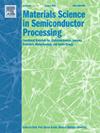基于光-芬顿反应的聚晶金刚石化学机械抛光实验研究
IF 4.2
3区 工程技术
Q2 ENGINEERING, ELECTRICAL & ELECTRONIC
引用次数: 0
摘要
聚晶金刚石(PCD)因其卓越的硬度、耐磨性和导热性,被广泛应用于切削工具、光学设备和散热工具。然而,这些优异的性能也使 PCD 表面的抛光成为一项挑战。传统的抛光方法很难同时实现高材料去除效率和高质量的表面光洁度。本文提出了一种基于光-芬顿反应的 PCD 化学机械抛光 (CMP) 方法。该方法利用 H₂O₂ 和 Fe₃O₄ 在紫外线(UV)照射下发生反应,生成高氧化性羟基自由基(-OH),有效氧化 PCD 表面,降低加工难度。使用分光光度法测量了不同反应溶液中 -OH 和 Fe2⁺/Fe³⁺ 的浓度。结果表明,光-芬顿溶液中 -OH 的浓度最高,紫外光促进了 Fe³⁺ 向 Fe2⁺ 的转化,使正在进行的光-芬顿反应持续进行。通过单因素抛光实验,研究了各种加工参数对 PCD CMP 性能的影响。结果表明,PCD 的材料去除率随 H₂O₂浓度、磨料粒度、抛光压力和抛光片速度的增加而增加。相反,随着紫外线强度和 Fe₃O₄ 浓度的增加,材料去除率先增加后降低。此外,随着紫外光强度、磨料粒度、抛光压力和抛光片速度的增加,PCD 的表面粗糙度(Ra)先减小后增大,而随着 Fe₃O₄ 和 H₂O₂ 浓度的增加,表面粗糙度(Ra)则减小。在紫外光强度为 100 mW/cm2、Fe₃O₄浓度为 2 wt%、H₂O₂浓度为 10 wt%、磨料浓度为 5 wt%、磨料粒度为 0.5 μm、抛光压力为 0.89 MPa、抛光速度为 60 r/min 的条件下,PCD 的材料去除率达到 698.7 nm/h,表面粗糙度 Ra 为 3.78 nm。本文提出的基于光-芬顿反应的 CMP 方法为难加工材料的抛光提供了一种新方法。本文章由计算机程序翻译,如有差异,请以英文原文为准。
Experimental study of chemical mechanical polishing of polycrystalline diamond based on photo-Fenton reaction
Polycrystalline diamond (PCD) is widely used in cutting tools, optical devices, and heat dissipation tools due to its exceptional hardness, wear resistance, and thermal conductivity. However, these excellent properties also make polishing the PCD surface a challenge. Traditional polishing methods struggle to achieve both high material removal efficiency and high-quality surface finishes simultaneously. This paper proposes a chemical mechanical polishing (CMP) method for PCD based on the photo-Fenton reaction. The method utilizes the reaction between H₂O₂ and Fe₃O₄ under ultraviolet (UV) light to generate highly oxidative hydroxyl radicals (·OH), effectively oxidizing the PCD surface to reduce the difficulty of processing. The concentration of ·OH and Fe2⁺/Fe³⁺ in different reaction solutions was measured using spectrophotometry. Results indicate that the concentration of ·OH is highest in the photo-Fenton solution, and UV light promotes the conversion of Fe³⁺ to Fe2⁺, sustaining the ongoing photo-Fenton reaction. Through single-factor polishing experiments, the effects of various processing parameters on the CMP performance of PCD were investigated. The results show that the material removal rate of PCD increases with increasing concentrations of H₂O₂, abrasive particle size, polishing pressure, and polishing disc speed. In contrast, the removal rate first increases and then decreases with increasing UV light intensity and Fe₃O₄ concentration. Additionally, the surface roughness (Ra) of PCD decreases initially and then increases with increasing UV light intensity, abrasive particle size, polishing pressure, and polishing disc speed, while it decreases with increasing Fe₃O₄ and H₂O₂ concentrations. Under the conditions of 100 mW/cm2 UV light intensity, 2 wt% Fe₃O₄, 10 wt% H₂O₂, 5 wt% abrasive concentration, 0.5 μm abrasive particle size, 0.89 MPa polishing pressure, and a polishing disc speed of 60 r/min, the material removal rate of PCD reaches 698.7 nm/h, and the surface roughness Ra is 3.78 nm. The photo-Fenton reaction-based CMP method proposed in this paper provides a new approach to polishing hard-to-process materials.
求助全文
通过发布文献求助,成功后即可免费获取论文全文。
去求助
来源期刊

Materials Science in Semiconductor Processing
工程技术-材料科学:综合
CiteScore
8.00
自引率
4.90%
发文量
780
审稿时长
42 days
期刊介绍:
Materials Science in Semiconductor Processing provides a unique forum for the discussion of novel processing, applications and theoretical studies of functional materials and devices for (opto)electronics, sensors, detectors, biotechnology and green energy.
Each issue will aim to provide a snapshot of current insights, new achievements, breakthroughs and future trends in such diverse fields as microelectronics, energy conversion and storage, communications, biotechnology, (photo)catalysis, nano- and thin-film technology, hybrid and composite materials, chemical processing, vapor-phase deposition, device fabrication, and modelling, which are the backbone of advanced semiconductor processing and applications.
Coverage will include: advanced lithography for submicron devices; etching and related topics; ion implantation; damage evolution and related issues; plasma and thermal CVD; rapid thermal processing; advanced metallization and interconnect schemes; thin dielectric layers, oxidation; sol-gel processing; chemical bath and (electro)chemical deposition; compound semiconductor processing; new non-oxide materials and their applications; (macro)molecular and hybrid materials; molecular dynamics, ab-initio methods, Monte Carlo, etc.; new materials and processes for discrete and integrated circuits; magnetic materials and spintronics; heterostructures and quantum devices; engineering of the electrical and optical properties of semiconductors; crystal growth mechanisms; reliability, defect density, intrinsic impurities and defects.
 求助内容:
求助内容: 应助结果提醒方式:
应助结果提醒方式:


